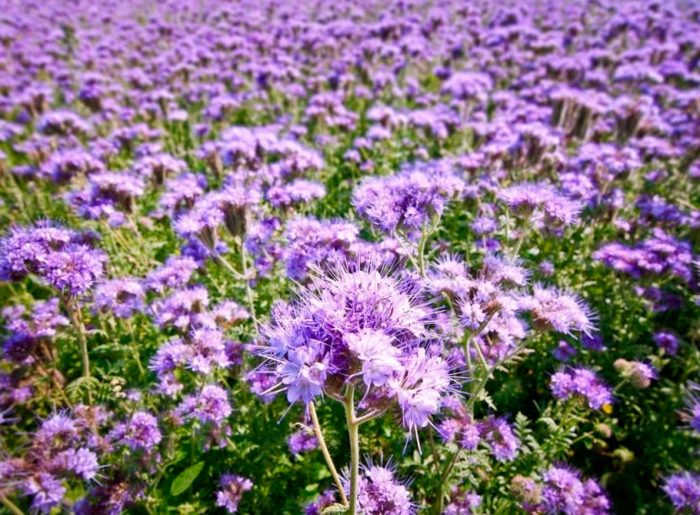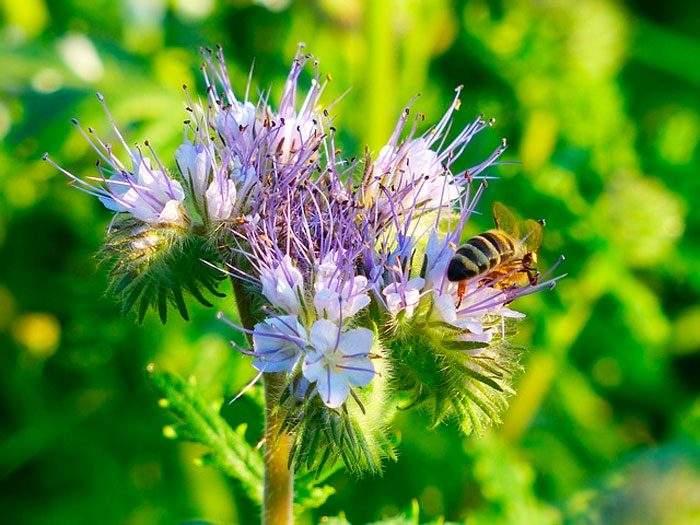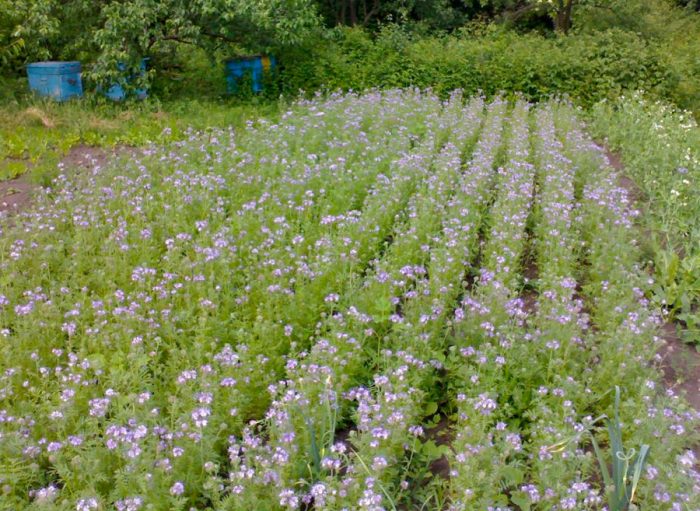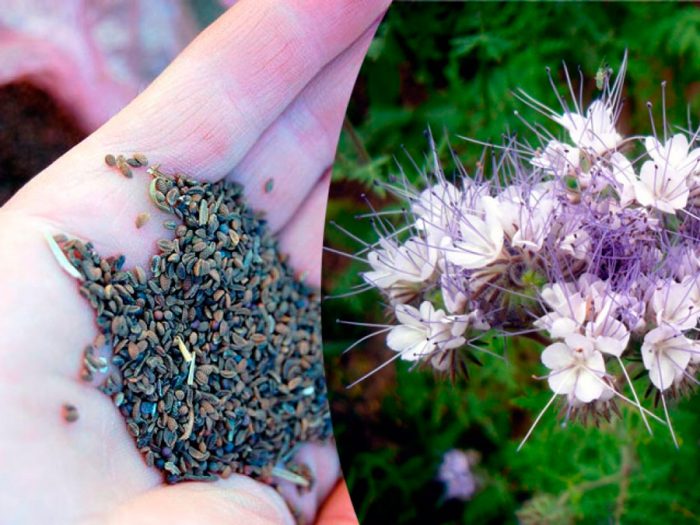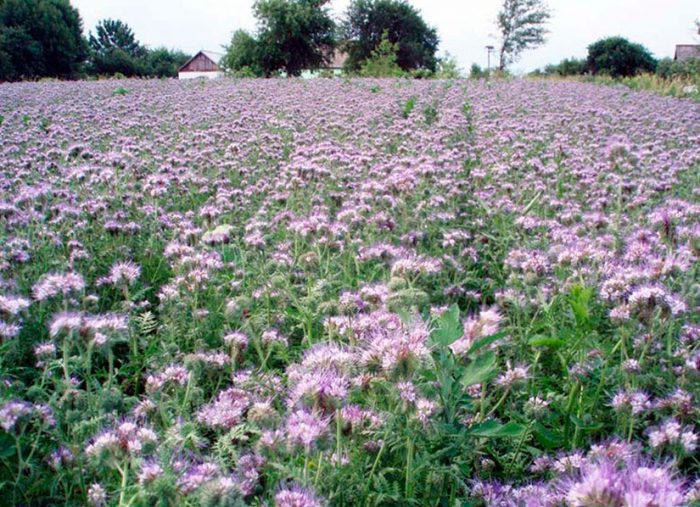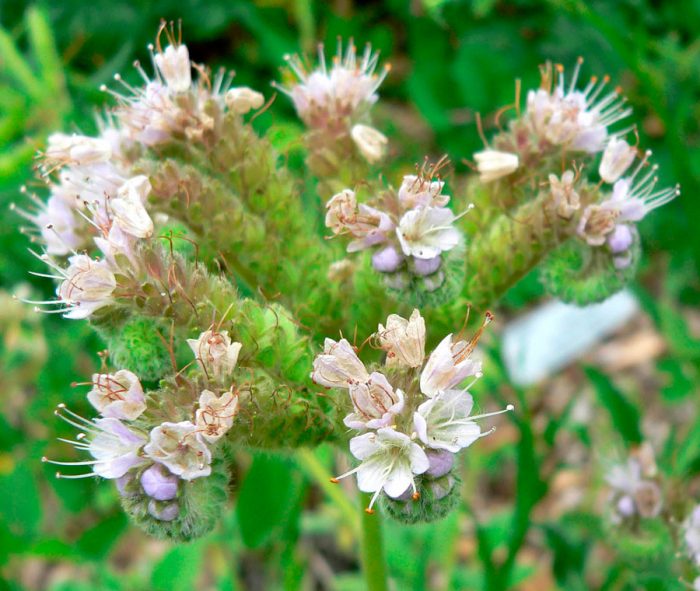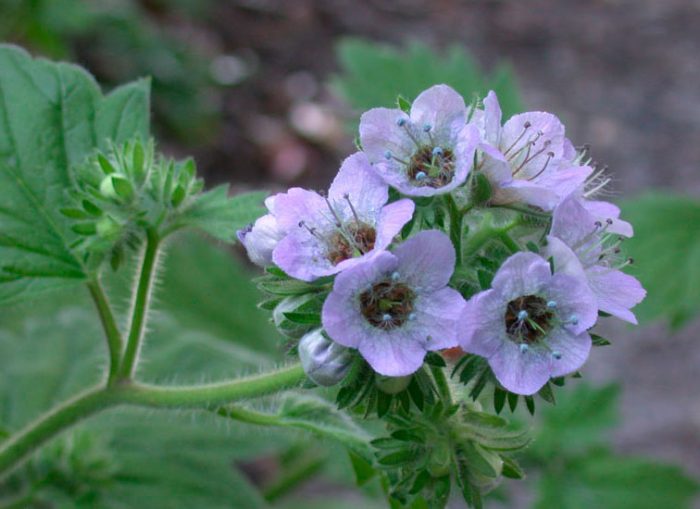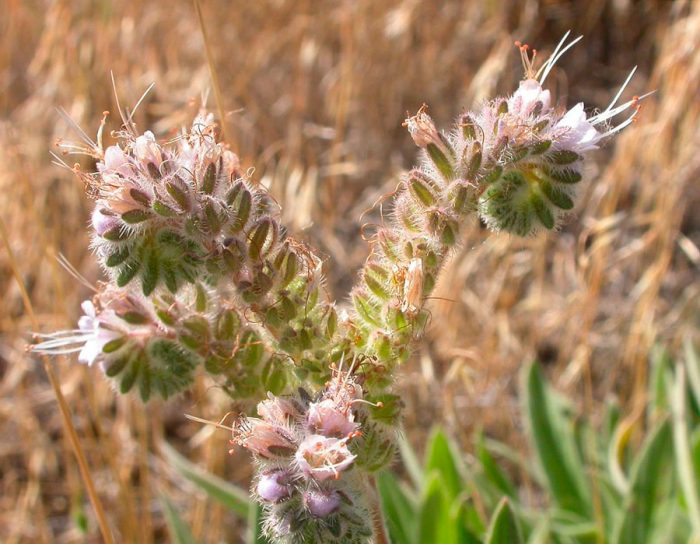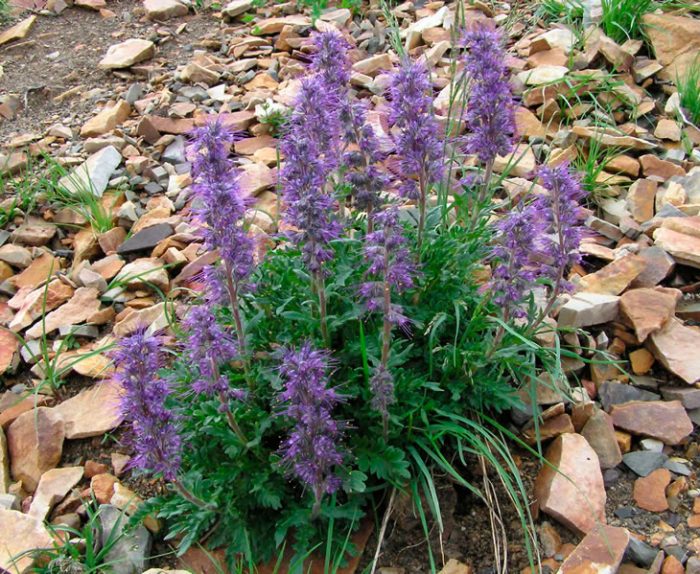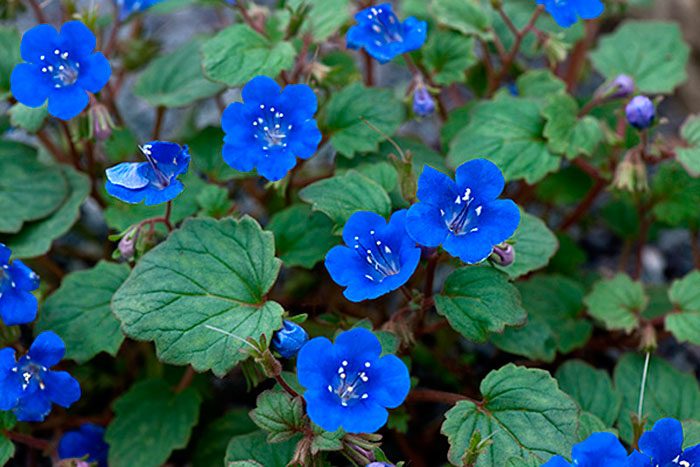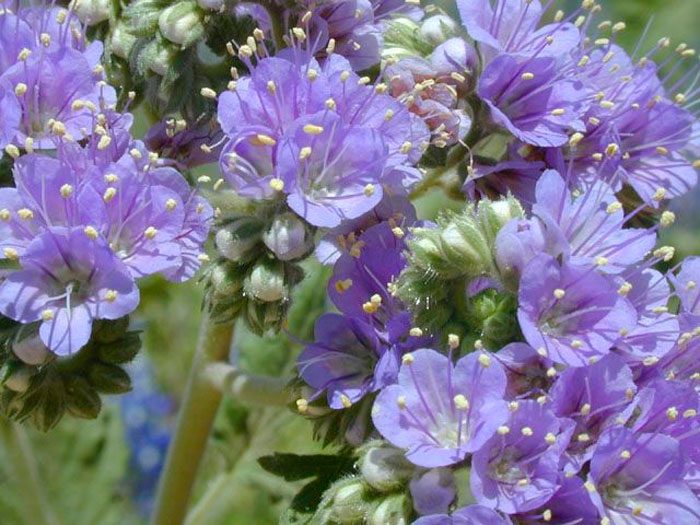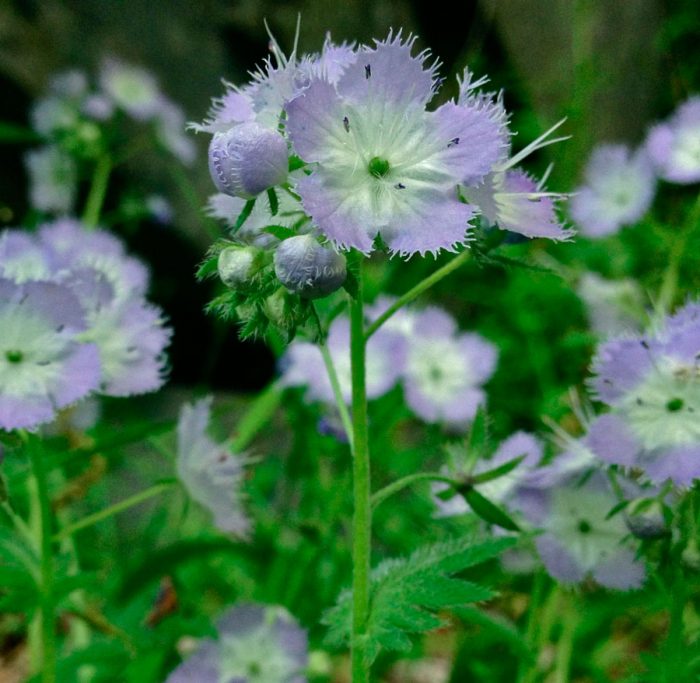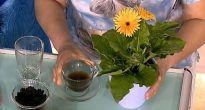The herbaceous annual and perennial plant Phacelia is a member of the Borage family. According to data taken from various sources, this genus unites 80-180 species and even more. In nature, Phacelia is found in the territory of North and South America, while it prefers to grow in sunlit open places with well-drained soil. The name of such a plant comes from the Greek word translated as "bunch", this is due to the appearance of its inflorescences. Phacelia tansy is cultivated mostly as green manure. Such a culture helps to improve the structure of the soil, enriching it with nutrients. Some phacelia species are cultivated by gardeners as ornamental plants. In addition, this plant is considered an excellent honey plant, which can attract bees and other pollinating insects to the garden plot.
Content
- 1 Features of phacelia green manure
- 2 Growing phacelia as a siderat
- 3 Phacelia care
- 4 Types and varieties of phacelia with photos and names
- 4.1 Phacelia silvery (Phacelia argentea)
- 4.2 Phacelia bolanderi
- 4.3 Phacelia spear (Phacelia hastata)
- 4.4 Phacelia silky (Phacelia sericea)
- 4.5 Phacelia campanular (Phacelia campanularia), or Californian phacelia, or Californian bell
- 4.6 Phacelia twisted (Phacelia congesta)
- 4.7 Phacelia purshii (Phacelia purshii)
Features of phacelia green manure
Phacelia tansy, or Ryazan is an annual plant that reaches a height of more than 100 cm, there is a bristly pubescence on its surface. The bush has an erect stem with glands, each of which grows about 20 lateral shoots. Basal pinnately dissected leaf plates are 3–15 centimeters wide and 6–20 centimeters long. The leaves include pinnate-toothed lanceolate leaves. As a rule, stem leaf plates are sessile, but they sometimes have short petioles. Complex corymbose-umbellate inflorescences consist of many wide-bell-shaped flowers about 1 centimeter long, and they are painted in a lilac-blue hue. The length of the stamens in flowers is about 1.4 cm, due to which they noticeably protrude from the corolla, they include anthers of an oblong-elliptical shape and naked filaments. The fruit is a broad-ovate capsule, which reaches a length of about 0.5 cm, inside it has 2 wrinkled seeds of dark brown color.
This type of phacelia is considered not only a honey plant, but also a universal green manure. It is sown both before and after any crop. For example, after mustard, sowing the area with plants belonging to the cruciferous family is prohibited.This frost-resistant green manure differs from others in that the growth of green mass occurs very quickly, and it is also able to inhibit the growth of weeds. Phacelia helps to reduce soil acidity and enrich it with nitrogen and potassium.
Growing phacelia as a siderat
What time to sow
Phacelia is very popular with gardeners and gardeners who use it as a green manure. The seeding time depends on what you want to achieve:
- Phacelia seeds can be sown immediately after the snow cover has melted. The shoots that appeared after half a month will actively increase the green mass. If you leave the grass on the surface of the soil after mowing, you get an excellent mulch, and if you embed it shallowly into the soil, you will get good humus.
- If this plant is used as a honey plant, then it is sown between rows of other crops throughout the season. After wilting, the bushes are mowed, and then they can be used as mulch or fertilizer. If necessary, phacelia are sown again in the vacated areas.
- If sowing is carried out after harvesting from the last summer weeks and until the second half of autumn, then in this case such green manure will contribute to the recovery and restoration of the soil, and it will also saturate it with nutrients and improve its composition. After mowing, the phacelia can be left on the soil surface as mulch, in this case it can save the root system of perennials from freezing, while the soil will not be eroded, and useful substances will not be washed out of it by rains in the fall.
- Podwinter sowing is also used. As a result, seedlings appear at the beginning of the spring period, they are mown shortly before the planting of the main early crop. In this case, the sowing of seeds must be carried out very densely, since after a frosty winter their germination suffers.
Sowing rules
It is not necessary to stratify the seeds of such a plant before sowing, since they have a fairly high germination capacity. The soil on the site is loosened with a rake, and then the seed is scattered over its surface. The seeds are dark in color, so they cannot be seen on the soil. Therefore, for the convenience of sowing, it is recommended to combine them with dry sand.
When sowing such a green manure between rows of other crops, a furrow is made with a depth of 20 to 30 mm, after which it is watered with a small amount of water and the phacelia is sown into it. After that, the groove must be repaired. If the sowing was not carried out on a hot dry day, then the crops do not need additional watering.
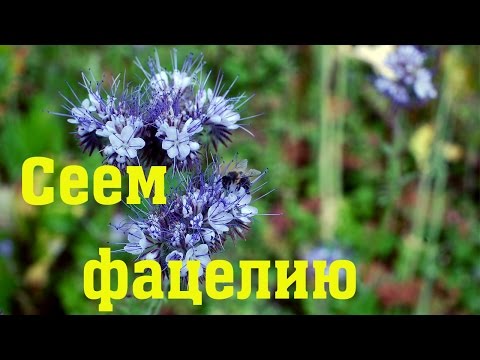

Watch this video on YouTube
Phacelia care
Such a culture needs watering only before the seedlings that have appeared grow up and get stronger. If the sowing was carried out before winter or at the beginning of the spring period, then you will not have to water the site, since the soil is already saturated with moisture. If it rains regularly during the season, then there is no need to water this green manure at all. However, during a prolonged dry period, the phacelia area needs to be watered occasionally. You also need to regularly loosen the soil surface around the plants to a shallow depth.
In order for the bushes to grow a lush green mass, they should be fed with organic matter (for example, Optim-Humus, Baikal EM-1, Bokashi, Siyanie-1), which contains effective soil microorganisms. Such feeding should be carried out strictly adhering to the instructions attached to the fertilizers.
Mowing of such grass is carried out during the formation of buds. If you cut it later than necessary, the shoots and foliage will become very rough, and this will significantly slow down their decomposition. And with a slower decomposition, a large number of harmful microorganisms enter the soil from the rotting mass. After the grass is mowed, it must be sprayed with a preparation that accelerates processing, and then the top layer of soil is dug up.Such grass is actively decomposing, and the subsequent humification of the soil is also observed only if there is moisture in the ground, in this regard, during a drought, the site will have to be regularly watered. When the grass is embedded in the soil, its surface is leveled, and then this area is sown again with this green manure. This method allows you to get 3 or 4 harvests of this herb during one season, while in the next season such a site can be sown with vegetables.
Diseases and pests
Such a culture is very resistant to any diseases and harmful insects, and it can also protect those plants that are grown nearby from them. In order to prevent damage to vegetable crops by various diseases and harmful insects, it is recommended to sow phacelia between rows.
Types and varieties of phacelia with photos and names
As mentioned above, the type of phacelia tansy is very popular among gardeners and gardeners, its detailed description can be found at the beginning of the article. Other types and varieties of such herbs are also cultivated, but as a rule, they are grown as ornamental plants.
Phacelia silvery (Phacelia argentea)
This rare species naturally occurs in northern California, but it prefers to grow on coastal sandy slopes and dunes. The height of the ascending and drooping shoots is about half a meter. The surface of the glossy leaf plates is covered with white pubescence, which is why they acquire a silvery color. Small white flowers are collected in spherical heads.
Phacelia bolanderi
In nature, this phacelia is found in the "redwood" forests in California. Extending worm-like shoots form low mounds. The terminal inflorescences consist of large, arched, bell-shaped flowers of a lavender-blue hue.
Phacelia spear (Phacelia hastata)
In the wild, the species is found in the United States of America, and it prefers to grow in thickets of wormwood and coniferous forests. The height of the bushes is about half a meter. The flowers are small, white or light purple in color. This species differs from the others in that on the surface of the leaf plates there are almost parallel veins and dense silvery hairs. This species has a rather popular variety - Alpina: the bush has stretching shoots and short inflorescences of a lavender-purple hue, in nature it can be found at an altitude of up to 3.5 thousand meters above sea level.
Phacelia silky (Phacelia sericea)
Under natural conditions, such a fairly popular plant is found in North America from Colorado to Alaska and from Utah to New Mexico. The bush has a few or only 1 unbranched stem, reaching a height of about 0.45 m. On the surface of the plant there is pubescence, consisting of silky delicate silvery hairs. The leaf plates are deeply cut. The flowers have lavender, blue or purple color and long stamens, due to which the plant looks like a monarda or lupine. Varieties:
- Ciliosa... It occurs naturally on the grassy slopes of Oregon. In height, such a multi-ciliated phacelia reaches about 20 centimeters. From greenish-gray foliage, on the surface of which there are thin hairs, this grass forms a rug. The color of the flowers is purple.
- Verna... This species is found naturally among basalt stones in Oregon. The bushes reach a height of about 25 centimeters. The terminal inflorescences are racemose-shaped and consist of white or bluish flowers.
Phacelia campanular (Phacelia campanularia), or Californian phacelia, or Californian bell
The species is native to southern California. The height of such an annual is about 25 centimeters. Erect and fragile shoots are colored pale red.Greenish-blue weakly lobed petiole leaf plates reach about 60 mm in length, along the edge they have a brown-red border. The racemose one-sided inflorescences consist of bell-shaped dark blue flowers, reaching about 30 mm in diameter, at the base they have dark spots. The most popular is the Blue Bonnet variety: rich blue flowers adorn the bush, which reaches a height of about 0.4 m.
Phacelia twisted (Phacelia congesta)
At the tops of the shoots, twisted inflorescences grow, consisting of small blue flowers, which reach no more than half a centimeter in diameter. The stems reach about 0.5 m in length, they are decorated with greenish leaf plates, on the surface of which there is a dense pubescence.
Phacelia purshii (Phacelia purshii)
The height of the bush is about half a meter, its leaf plates are densely pubescent. Small flowers reach about 30 mm in diameter, the corolla is white from the inside, and its outer surface is covered with specks of purple. Such a plant appeared quite recently as a result of selection.
Other cultivated species are: phacelia variegated, full-bunched and Layel.
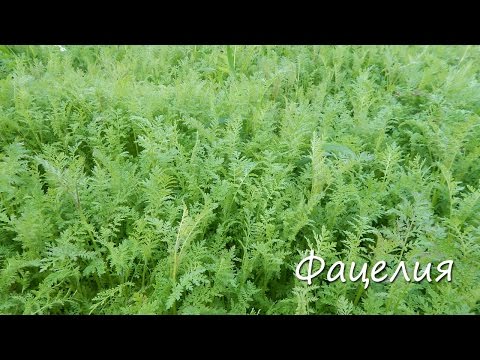

Watch this video on YouTube

